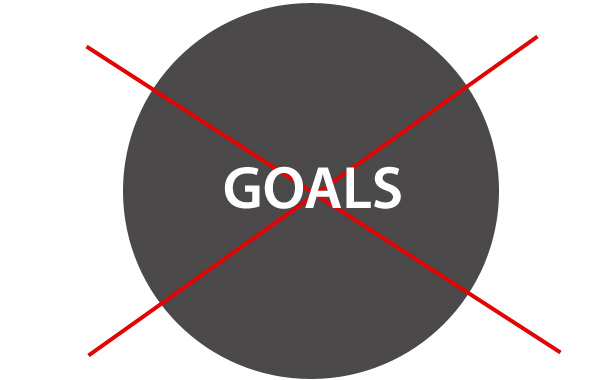Don’t Set Service Goals in 2013
by Rob Zell:
Everywhere you turn, someone is writing about customer service: how important it is; how it is the differentiator in a sea of common products and services; how much guest loyalty brings to the bottom line. In light of this trend, I’m asking you to not set goals for transactions, service scores, basket size or any other metric you have that measures your “guest experience.”
Focus on the Work that Makes a Difference
If you are still reading, and I hope you are, consider some of the examples shared by Peter Bregman in his recent HBR blog post. The negative side effects of goals are, as he wrote, “…practically impossible to predict…” because the focus tends to be on the result, not the tasks required to reach the end.
Instead, if you have a focus on “making sure every guest leaves happy” you and your team can brainstorm the tasks that will create that outcome. The tasks will differ from organization to organization based on the priorities. By designing the work properly and focusing effort on the work then the outcome logically follows. When teams focus on the outcome, that’s when those unintended side effects emerge.
Get into the Hearts and Minds of Your Guests
If you really want to know what the experience is like for your guests, ask them. Better yet, set aside your own internal bias and experience life the way your guests do. Stand in line and watch the non-verbal behavior of other guests. Eavesdrop on their conversations as they mill about your establishment and wait to pay. What are they talking about? Do they seem happy, satisfied, annoyed, irritated? Not sure? Ask and I’m sure they’ll be happy to tell you. The point is, until you get “on the ground” or spend time “on the front lines” you don’t really know what works and what doesn’t.
As Michael Schrage points out in his blog entry, there are probably elements of your guest experience that are distracting or even annoying to your guests. These can be great outlets for local innovation (at a unit or market level) because they are often too small to manage on a large scale and are symptoms of local demographic or geographic culture.
Measure What Matters (and Manage the Measuring)
I know the holidays are hectic and it can be hard for retailers to find people with the service tenacity to maintain a smile in the face of the holiday shopping onslaught. I nearly laughed out loud at the young lady who, after not greeting me, not speaking to me, discussing issues with her co-worker, looking past me and not thanking me for shopping at ____, abruptly pointed out the online survey and reminded me they were looking for “fives.”
I commented on this once before and it bears repeating: start with the end in mind. In my earlier blog, I noted that by starting with the end in mind you build a training solution to teach people the skills and knowledge needed to be successful. Thanks to Peter Bregman’s post, I might amend my comment to suggest that you should teach the skills for tasks that enable that outcome.
You can certainly measure the efficiency of the team with polls and online surveys so long as they measure the work done. The caution I would make is that too often we make the measurement the end result. In my recent example, and in the earlier one, getting responses and getting the highest marks is what is being talked about by managers.
I imagine in the backroom of many retailers (and restaurants and service providers and technicians and…) there is a poster that measures surveys completed and scores by category. Managers talk it up in shift huddles and team meetings but rarely do they go out on the floor to observe the guest experience and provide quality feedback to their associates. Unfortunately, the task that gets executed is the request for feedback and specifically a ‘5’, regardless of the quality of the service.
Make it a Game
Consider the latest trend of gamification in learning, advertising, marketing and social media engagement. The techniques borrow heavily from game design in the use of leaderboards, badges, achievement levels and progress bars. All of those elements are just ways of letting people know how they are doing in the game; in other words, they are feedback mechanisms. Your people need feedback along the way and that’s what your goal needs to be: set a goal this year to provide your people frequent motivational and developmental feedback.
Great customer service starts by considering guest needs and then building processes and interactions backwards to create those conditions for success. Make it your focus this year to work at creating those conditions, measuring the right things and providing feedback to the front-line employee.
Good luck in 2013 making customer service your focus!





